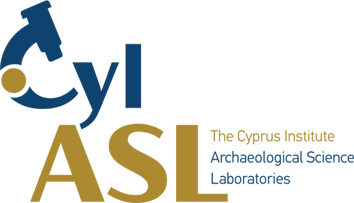Life at the Furnace. Copper producing settlement ecosystems in the north-western Troodos, Cyprus. (LAF)
For the past 5000 years, the extraction of metals has been vital to the development of human society. In the pursuit of these hidden resources, humans have turned their planet upside down. Since the Bronze Age, copper production has been a key element in the development of Cypriot society and its geopolitical significance, and by the Roman period (1st c. BC), massive industrial waste piles were part of the landscape. Humans and the environment were inseparably intertwined, and copper production would not exist in isolation. It required raw materials, different resources, and labour as well as consumers embedding the settlements involved in an ever-expanding network. The Roman proto-industrial production scale has been blamed for many of the depleted landscapes in the Mediterranean, but evidence to a much more complex management of land and human resources is still scarce.
Life at the Furnace (LAF) aims to further the understanding of the complex human/social and environmental impacts of the second-tier copper producing sites in the north-western Troodos foothills, through the investigation of the combination of material culture and environmental data. The main study area of LAF is the Peristerona Valley with the slag heap at Ayia Marina-Mavrovouni (Figure 1).
The project brings together social studies, through an archaeological artefact-based intensive and extensive side-by-side archaeological surface survey and archaeo-historical study, along with geoarchaeological research through a detailed landscape environmental reconstruction.
Through this interdisciplinary methodology LAF seeks to test the impact that copper production had on the landscape and land use, enabling us to build a picture of geomorphological change through the sedimentary record. More specifically, geomorphological mapping across the Peristerona Valley will investigate the morphology of the landscape to determine the environmental impact of centuries of human exploitation, and if there is evidence for (un)sustainable practices in specific periods. The chrono-stratigraphically controlled sedimentological record will provide insights into sedimentation/erosion rates and LAF will build a 3D model using GIS. Geoarchaeological survey includes intensive fieldwork and detailed recording of exposed profiles, to identify palaeosols and/or horizons of erosion/deposition, laboratory analysis including sedimentology, geochemistry, soil micromorphology as well as phytolith analysis. Luminescence dating supplemented and complemented by radiocarbon dating will provide chronological control of the sedimentological and faunal records. Anthropogenic influence will be studied in a diachronic perspective focusing within the later Holocene period.
This strategic integration of geo-archaeological sampling and archaeological methods to create complimentary datasets, to evaluate causality and develop the interpretation of the past is new in Cyprus.
The project is an international interdisciplinary collaboration between researchers from the Saxo-Institute, theNational Museum (Copenhagen), Uppsala University, University of Southampton, the Cyprus Institute (Nicosia), and the Department of Antiquities, Cyprus promoting the internationalization of Danish research.


